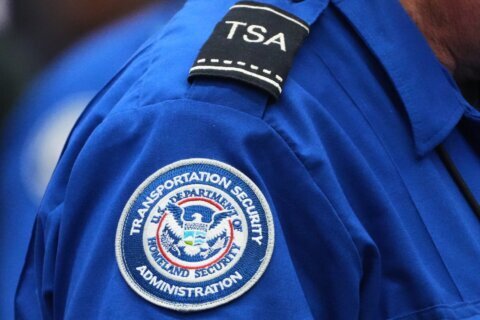A bill that has passed the Maryland General Assembly would require school systems to collaborate with local and state transportation agencies to address pedestrian safety needs before a new school is constructed.
The Safe Walk to School Act, introduced by Del. Jared Solomon (D-Montgomery County), calls for a pedestrian safety plan to be crafted before a new school is built or when 100 or more seats are added to an existing school. The bill, which received bipartisan support, lists Anne Arundel, Howard, Prince George’s and Montgomery counties by name.
Crafting a plan will be a requirement for localities using state funds to build a school.
A spokesman for Gov. Larry Hogan said he will give the bill “thoughtful consideration” when it reaches his desk. The 2022 General Assembly session concluded Monday, and Hogan’s staff is now going through the process of evaluating the measures that passed.
If approved, the law will go into effect July 1.
The legislation is the latest in a series of efforts in the D.C. region to keep students safe while walking to school. The proposed law, Solomon said, would enable jurisdictions to be proactive instead of reactive when it comes to pedestrian safety.
“It’s involving the community looking at the walkshed, sidewalk infrastructure, safe routes to school, potentially speed limits in and around schools, and really engaging with the community to get a sense of what is the community want, what is the community need, and how can we make changes that will ultimately make things safer for kids and their families,” Solomon said.
Solomon said he started considering how to address pedestrian safety in 2019, and that the concept stems from both “unfortunate incidents” that occurred in Montgomery County and near-miss incidents.
In a Facebook post, safety advocate Kristy Daphnis said she proposed a pedestrian safety plan during a meeting with Solomon at a Wheaton IHOP shortly after he was elected.
“This Act will certainly not solve all of the safety issues in school walk zones (hardly even a fraction), and it would not have saved the poor 1st grader who was killed last week while waiting for the school bus… but, *any* sort of better engagement from MCPS and improvements in cross-agency/community collaboration on these topics is a huge step in the right direction,” Daphnis said in the post.
Under plans detailed in the bill, the county’s Department of Transportation and the State Highway Administration would evaluate existing infrastructure and analyze the need for expanding school zones on state and county roads.
The current bill only applies to the mile to mile-and-a-half stretch near a school — Solomon said the variation that passed doesn’t call for evaluating where bus stops are located, but he hopes to address that in coming sessions.
Many schools, Solomon said, are located in areas that aren’t designed to be “community friendly.” He pointed to Silver Creek Middle School in Kensington, near Connecticut Avenue.
“You have a situation where you have what is essentially a six-lane highway, three lanes in either direction, running through the heart of the community,” Solomon said. “You have kids who live less than a mile from school, and it’s not safe for them to walk because of Connecticut Avenue.”
Solomon said he’s working with the State Highway Administration on addressing issues on that stretch of Connecticut Avenue.
A former Baltimore City teacher, Solomon said he hopes addressing pedestrian safety issues before a school is built could help save money and ease parents’ concerns.
“If you can get more kids to be able to walk or bike safely, that’s going to dramatically reduce the number of bus trips that you have to take, it’s going to dramatically reduce the amount of cars that are going to clog up our roads in and around rush hour when school starts,” he said.








